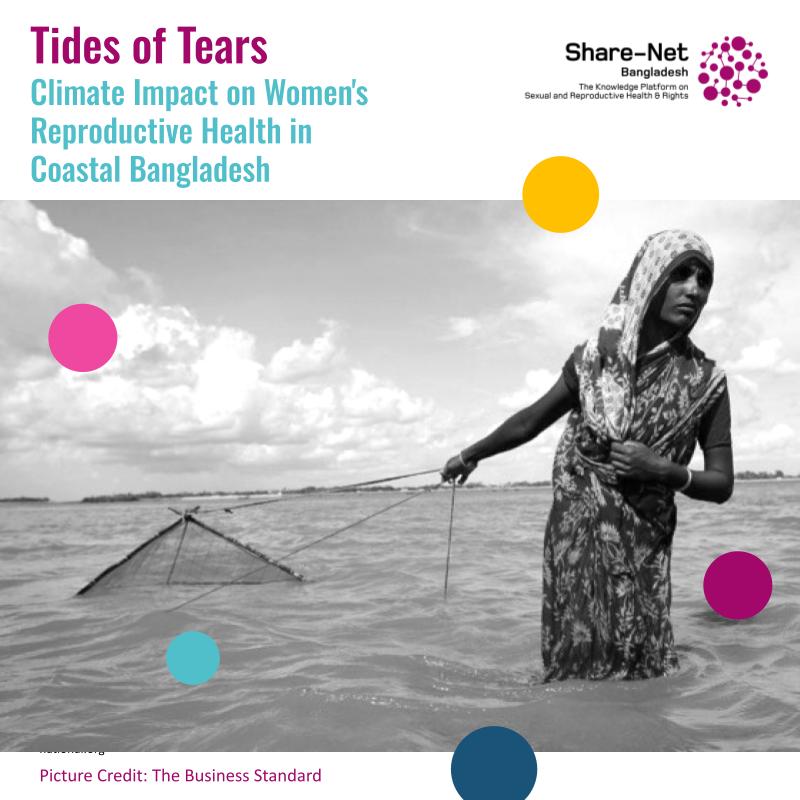Tides of Tears: Climate Impact on Women’s Reproductive Health in Coastal Bangladesh
In the picturesque coastal landscape of Bangladesh, where rivers weave tales of daily life, a quiet crisis is unfolding beneath the surface. As the relentless impacts of climate change take hold, it is the women in these resilient communities who bear a poignant burden, facing not only the risk of losing their ability to have children but also grappling with the challenge of earning a living in the heart of Bangladesh’s coastal regions.
The rising sea levels and escalating salinity in rivers have given rise to a health crisis among women in fishing communities, where access to clean water and medical care is alarmingly scarce. According to a recent report by BRAC, salinity intrusion affects over half of the coastal land, leading to a scarcity of fresh water in villages across these regions.
For Rini Begum, a fisherman from Chilabazar, the harsh reality of this crisis struck home 14 years ago. Wading through the Pashur River in pursuit of a livelihood, she suddenly felt an alarming sensation between her legs. The subsequent diagnosis revealed a prolapsed uterus, attributed to prolonged exposure to saline water. The exorbitant cost of treatment, a staggering BDT 10,000 (USD 90), compelled Rini to sell her family’s fishing boat, their essential asset for survival.
The severity of the situation is such that even deep tube wells pump saltwater, leaving villagers with limited options for accessing clean water. Women and girls, burdened by scarcity, resort to using saline water during menstruation, exposing themselves to severe reproductive health issues. Medical treatment, often unaffordable, forces families to sell crucial assets for life-saving healthcare.
In Bangladesh, approximately 1.056 million hectares (2.6 million acres) of arable lands are affected by salinity. The rising sea levels exacerbate this issue, causing high salinity for almost nine months a year, leaving a window of just three months during the monsoon to consume and store water with low salinity.
In Chilabazar, where Rini resides, salinity is so severe that even ponds and deep tube wells, installed at approximately 500-750 feet underground, pump saltwater. This dire situation compels women and girls to use saline water during their periods, leading to reproductive health problems such as uterine prolapse, cancer, gastrointestinal issues, and skin diseases.
The crisis sheds light on the stark reality that climate change impacts are not uniform. Women living in poverty, already grappling with limited access to healthcare and clean water, find themselves losing their uteruses at a young age due to circumstances beyond their control. These women, like Rini, are paying a hefty price for choices they did not make, underscoring the urgent need for immediate action.
As salinity continues to rise, young girls in coastal Bangladesh are taking drastic measures like using birth control pills to halt their menstrual cycles, while women in their 30s undergo voluntary hysterectomies simply to survive. The escalating problem emphasizes that climate change is not merely an environmental issue but a human crisis demanding timely and equitable solutions.
While climate adaptation initiatives can make a difference, the crucial aspects lie in improving funding and implementation. As we confront the harsh realities faced by countless women, it is vital to recognize that climate change is not just an environmental issue; it is a human crisis that demands timely and equitable solutions. Rini’s story serves as a poignant reminder of the urgent need for global attention, funding, and action to safeguard the reproductive health of women in Bangladesh’s coastal regions. The tears from the shore echo the silent cries of those who bear the brunt of a crisis they did not create.
Source: Women in coastal Bangladesh are losing their uteruses to the climate crisis
BRAC Video: Losing uteruses to the climate crisis in coastal Bangladesh


